Adventist Communicators Are Called To Engage In More Innovation, Collaboration, And Creativity

Fabricio Rivera (right), communication director of the El Salvador Union and Yanina García (left), associate communication director of the Chiapas Mexican Union open Inter-American Division’s CommSummit on Nov. 7, 2023, in Miami, Florida, United States. More than 180 communicators and media producers from across the territory gathered for the two day event in the auditorium at the IAD Headquarters.[Photo: Daniel Gallardo/IAD]
More than 180 Seventh-day Adventist communicators, media producers and special guests met in Miami, Florida, United States, November 7-8, 2023, for the Inter-American Division’s 2023 Communication Summit (CommSummit).
The gathering is the second after the first one 11 years ago, said Abel Márquez, communication director of the IAD. “CommSummit is meant to be a meeting space for professional relationships and the exchange of ideas and experiences to promote innovation, collaboration, and creativity within the church,” he said.

Abel Márquez, communication director of the Inter-American Division and executive director of Hope Channel Inter-America speaks to the delegates on taking the opportunity to embrace more innovation, collaboration, and creativity with the church. [Photo: Daniel Gallardo/IAD]
The event emphasized mission and the spiritual importance of the service Adventist communicators provide, even when their talents and contributions are not always appreciated. “In a local church, communication is usually the only department that has no budget,” said guest speaker Pastor Arnaldo Cruz. “For some churches, communication is about one of the brethren who goes to the podium to announce the activities of the church. But during COVID, the only department that had no budget became key to save the [functioning of] the church,” he said.
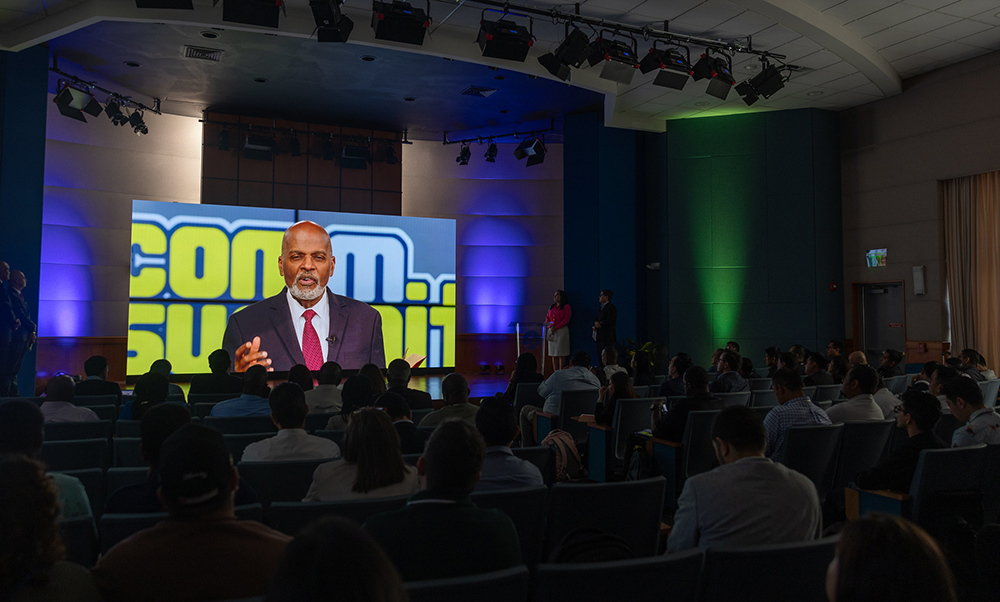
Inter-American Division President Pastor Elie Henry welcomes and greets communicators during opening day, Nov. 7, 2023. [Photo: Daniel Gallardo/IAD]
Quoting Jesus’ mandate to “go and preach to the whole world,” Cruz suggested focusing on being where people are on social networks. “Social networks need to become a place of salvation,” he said. “Let’s focus as a church to learn about the new technologies, including AI, to use it to share the gospel.”

Pastor Arnaldo Cruz, communication director of the Southeastern Florida Conference, encourages communication directors to make sure social networks become a place to share the gospel of salvation. [Photo: Daniel Gallardo/IAD]
God-based innovation
Daryl Gungadoo, in charge of Adventist Review Media Lab, discussed some of the latest technological advancements and the challenges and opportunities for communicators.

More than 150 communicators and media producers listen in as the two-day CommSummit event began. [Photo: Daniel Gallardo/IAD]
Against that background, God allowed for human beings to develop innovation and communication in ways we find it hard to maintain. “The Seventh-day Adventist Church was at the forefront of using the printing press, and then included radio. Then it took more time to incorporate television, but we eventually got there. Now it needs to consider how to incorporate the newest technologies for mission,” he said.
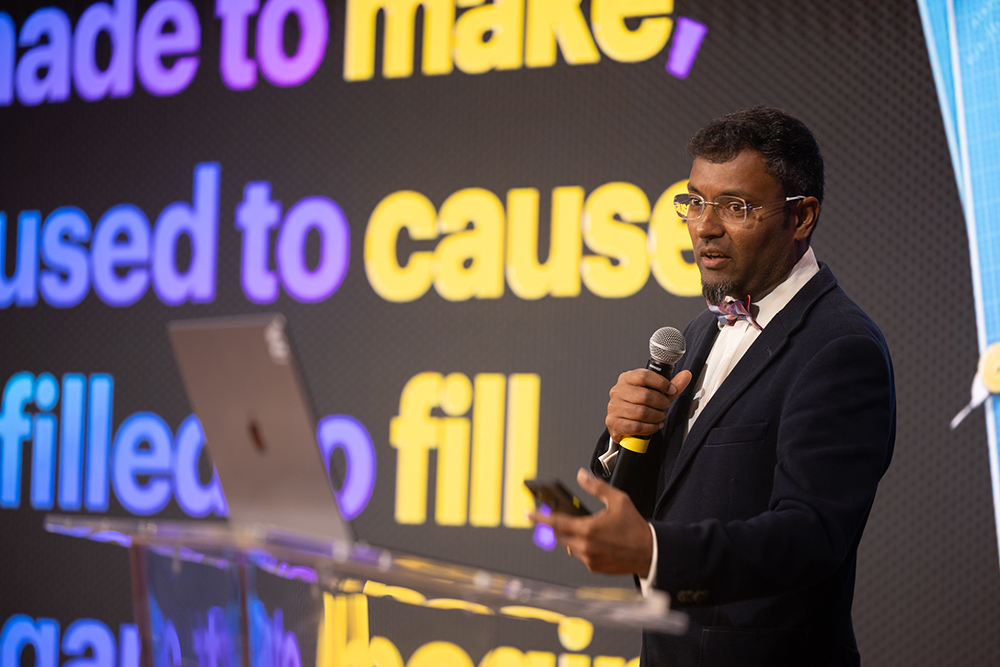
Daryl Gungadoo, in charge of Adventist Review Media Lab, said the church now :needs to consider how to incorporate the newest technologies for mission.”[Photo: Daniel Gallardo/IAD]
Addressing administrators directly, Gungadoo asked, “How are you as administrators going to create new roads to let the younger generation drive on and trust [it]? What we can do best is building better roads for the next generation instead of trying to monopolize that road… Let [young people] drive on that road that you’re creating for them.”
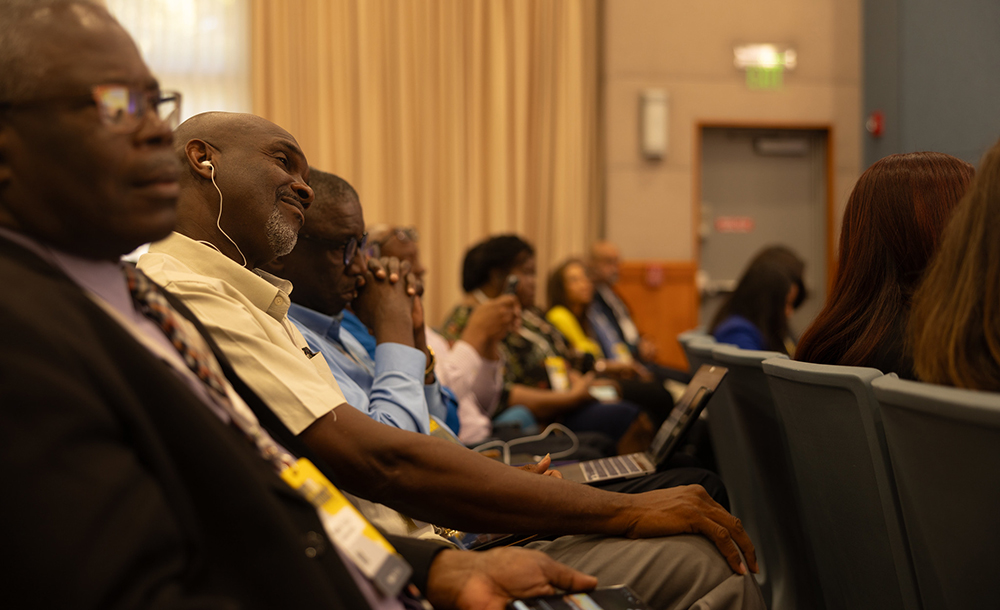
Delegates from the Caribbean Union sit attentively during day one of CommSummit, Nov. 7 , 2023. [Photo: Daniel Gallardo/IAD]
General Conference Communication Director Williams Costa Jr. discussed the role of imagination in the mission of the church. “The sanctuary of the soul is imagination,” he said. “Everything starts when you imagine. And imagination is indispensable for the mission of the church.”
In that sense, Costa emphasized, “technology helps imagination, but technology is not imagination. Imagination is what God inspires us to do.”
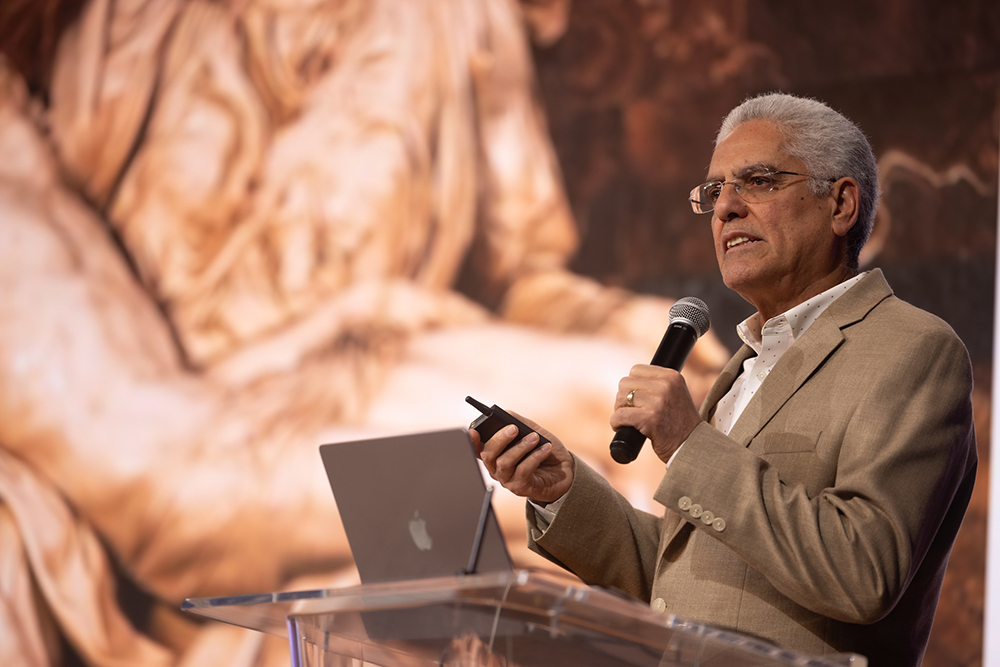
Williams Costa Jr., communication director of the General Conference, shares that God inspires us to use imagination in the work of communication. [Photo: Daniel Gallardo/IAD]
As an example, Costa showed how the GC Communication Department is incorporating AI to share a weekly message by GC president Ted N. C. Wilson in many languages, using Wilson’s own voice. “The point is, we cannot be scared about new technologies,” said Costa. “We need to embrace it and use it for the glory of God. We need to use our imagination to share the good news of salvation to all the world. That’s our purpose.”

Lizbeth Novaes, professor at Montemorelos University speaks on creating stories in trans-media storytelling. [Photo: Daniel Gallardo/IAD]
Then it was Adrian Duré’s turn to present. Duré, a producer and cinematographer at Hope Media Europe in Germany, adopted a personal tone to share part of his life story.
Duré shared that his presentation would focus on how he learned to manage and live with life’s risks and changes along the way. “Fear of the unknown has been part of my life realities,” he shared as, sitting with his back to the audience and looking at a big screen, he displayed some old photos and videos of his childhood. “I had a happy childhood, but full of fears. I was a fearful child,” Duré acknowledged. “But between that child and my reality now, I can say that I don’t fear problems or challenges as I used to because by God’s grace, I have been healed from fear.”

Adrian Duré, media producer and cinematographer at Hope Media Europe in Germany, shared his experience on how to manage and live with life’s risks and changes. [Photo: Daniel Gallardo/IAD]
Duré shared how he had to adapt to living in a different culture, in this case marked by order, organization, coordination, punctuality, and set structures. “It was very difficult, because as Hispanics, we thrive on chaos,” he quipped. “But at the same time, Germans took the risk of embracing someone from Latin America to work with them.”
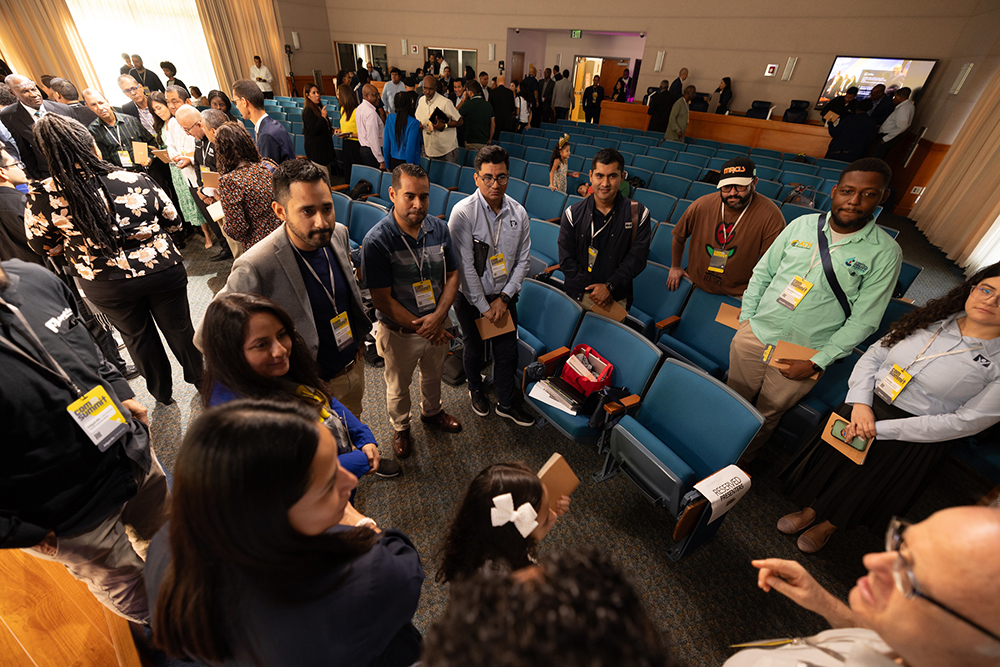
Communicators take part in an group activity on day one of IAD’s CommSummit, Nov. 7, 2023. [Photo: Daniel Gallardo/IAD]
In wrapping up, Duré called Adventist communicators to be willing to move to the unknown and accept the risks. “Sometimes, for an administrator, this is not easy to say, but I have witnessed miracles and met administrations that have said, ‘We will accept the risks involved [in this particular project] and will move forward by faith,’” Duré said.

César Martínez and wife Gaby Chagolla share their experience in making their dream trip to Israel recently and producing a series of their trip which is running on Hope Channel Inter-America. [Photo: Daniel Gallardo/IAD]
Day one of CommSummit also featured spaces for short talks on creating stories in trans-media storytelling, how dreams take you out of your comfort zone, recognizing what God has given us instead of what we do not have, using parables in cinematography as an evangelism tool, as well as practical ideas and experiences during panel discussions, prayer moments, interactive activities and more. In addition, recent television productions on Hope Channel Inter-America were highlighted, and a new film called “Los Jornaleros” was featured.
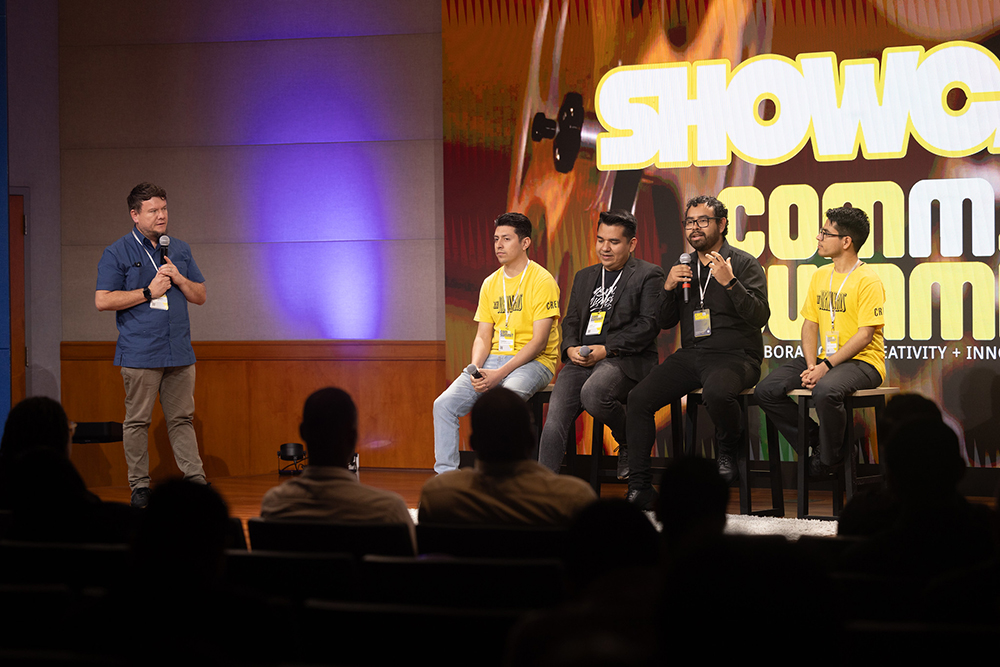
L-R: Jorge Diaz, producer of Hope Channel Inter-America, interviews the team from the recently released film “Los Jornaleros” Zabdiel Ramírez Ledesma, sound director, Luis Rojas, cinematography director, Samuel Gómez, producer and Enoc Valenzuela, art director. [Photo: Daniel Gallardo/IAD]
To view a photo gallery of the event, click HERE